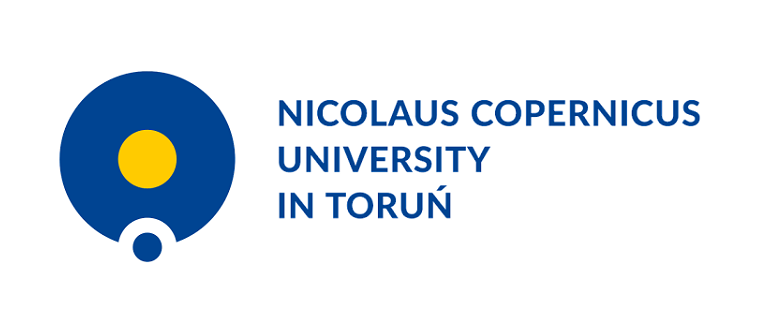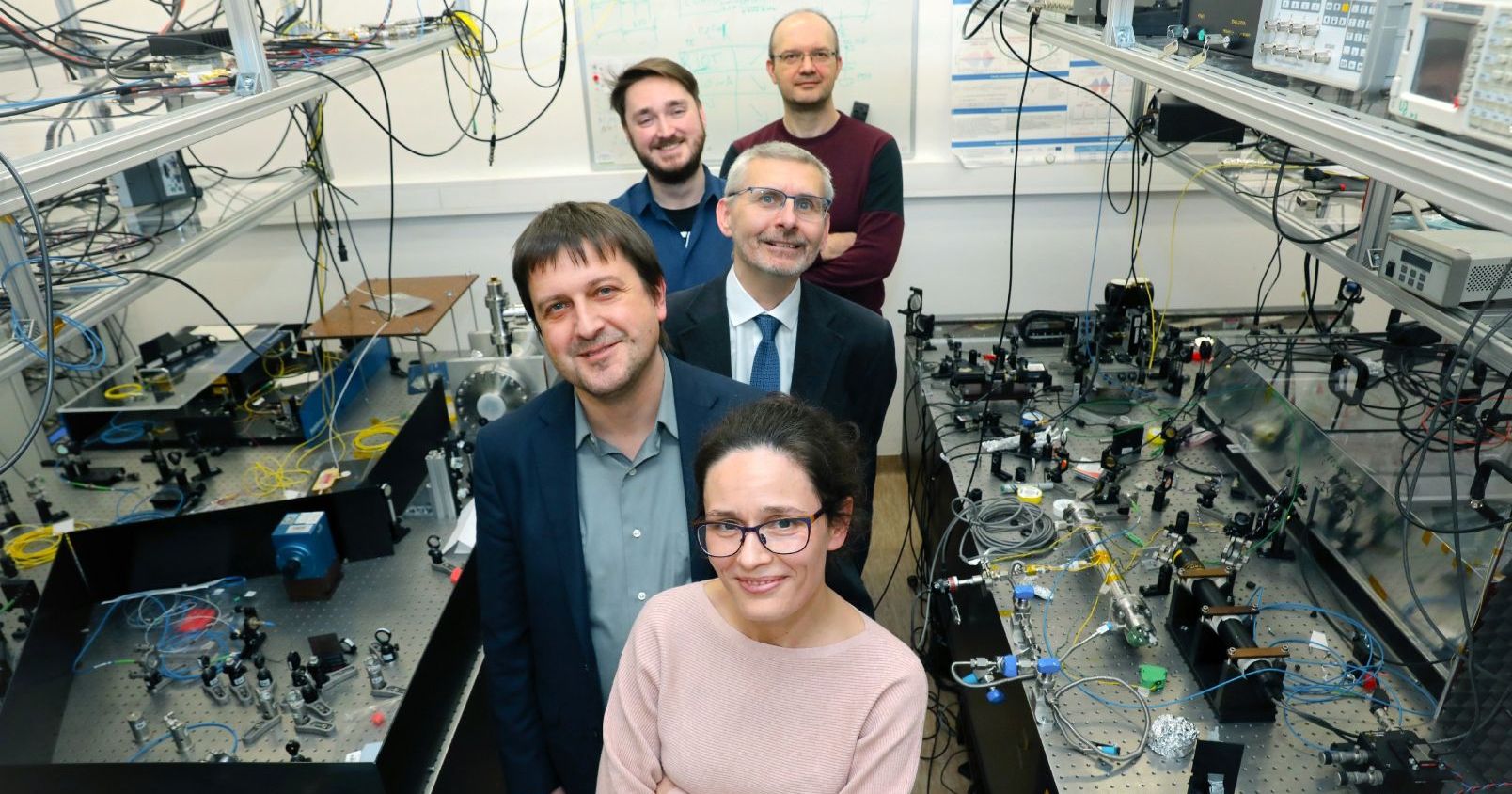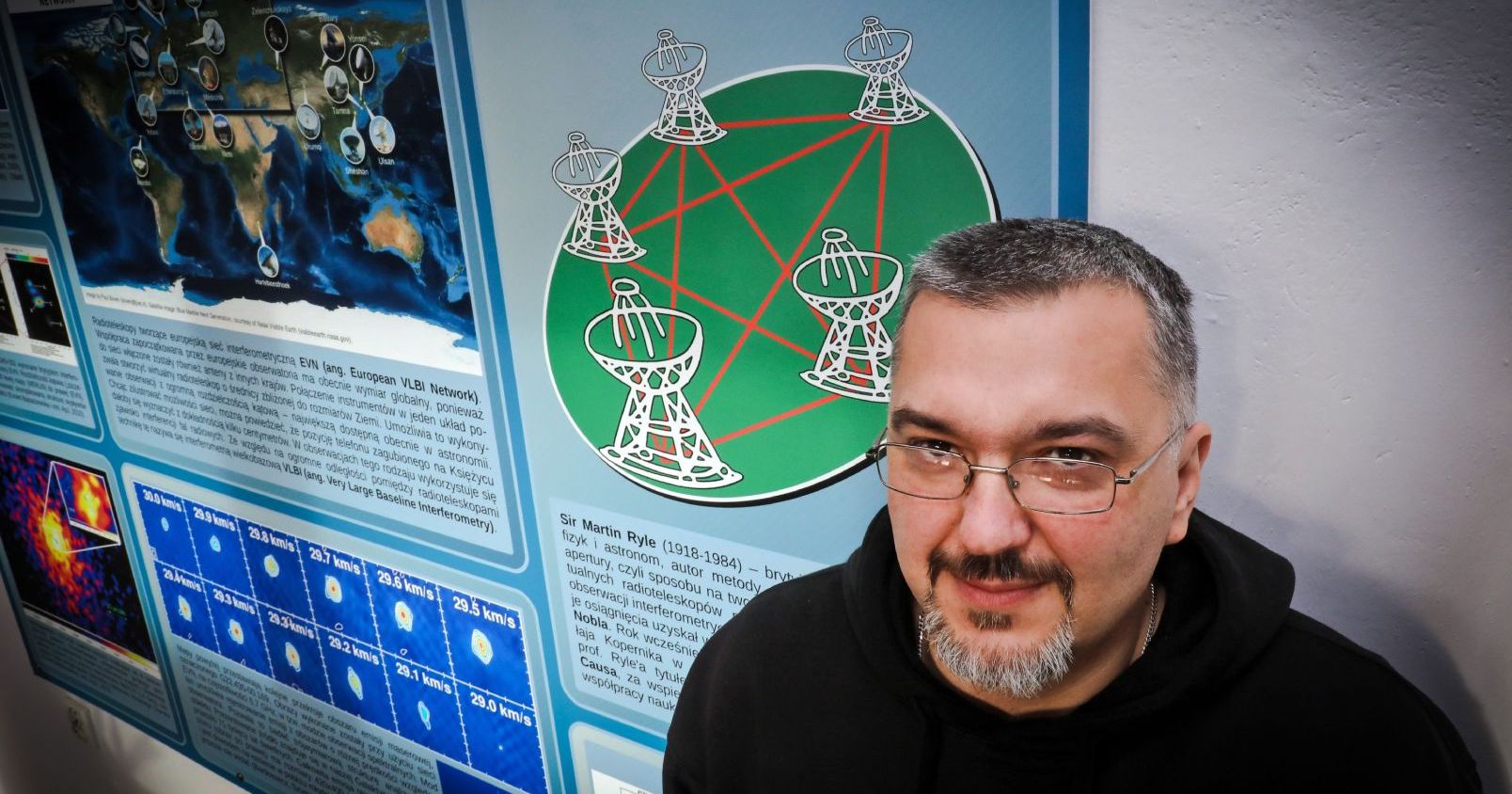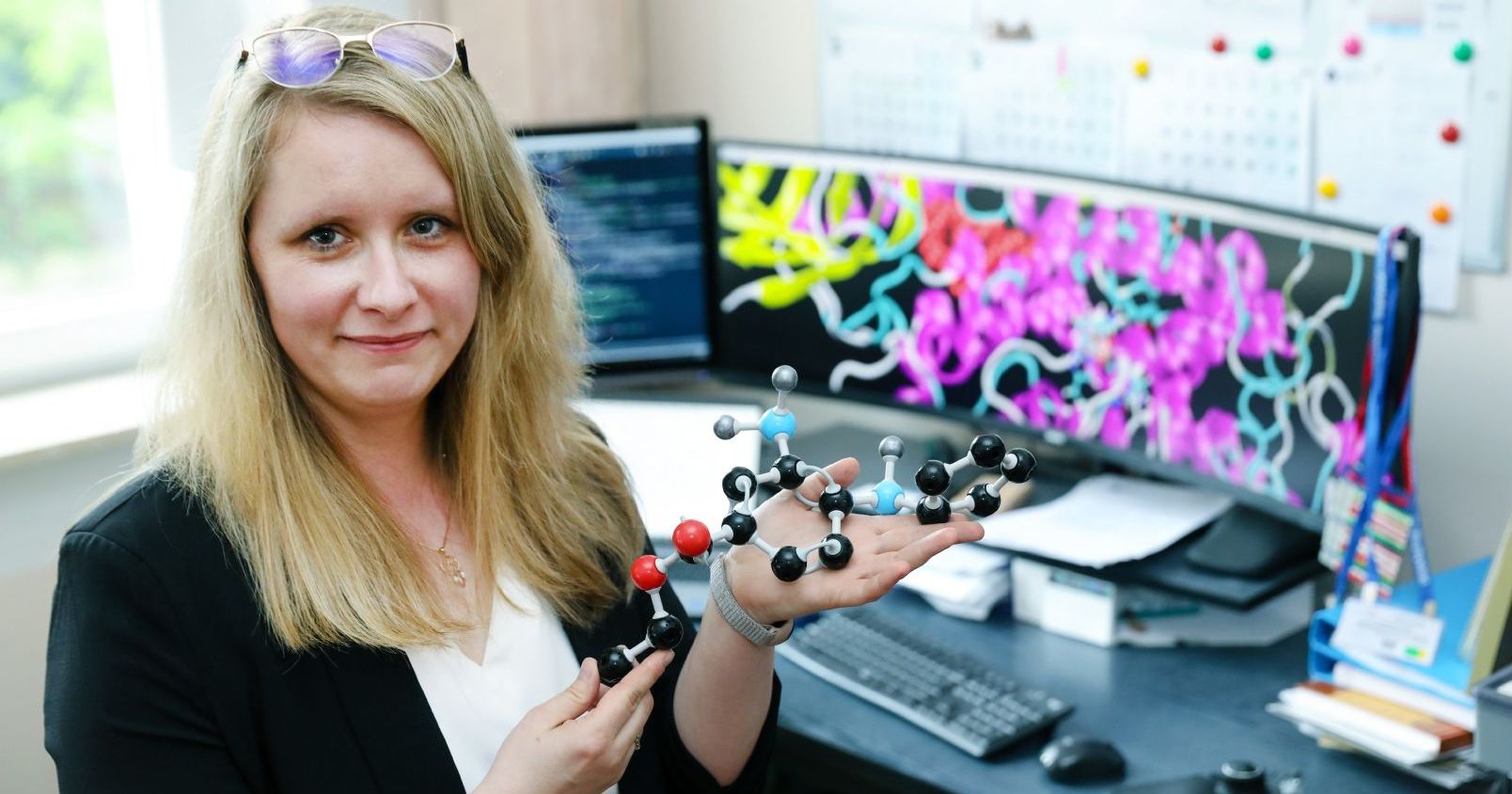 Exact sciences
Exact sciences
Strength of results consistency and agreement
Three experimental groups and a team of theoreticians, various laboratories, different methods, and the results of their measurements of the intensities of the overtone lines all came to a promille level of agreement. This is the first case of its kind. The team of physicists from our university has a large share in this scientific achievement.
Researchers from the Institute of Physics at the Nicolaus Copernicus University (NCU) in Toruń: dr Katarzyna Bielska, dr habil. Agata Cygan, NCU Prof., Prof. dr habil. Roman Ciuryło and Prof. dr habil. Daniel Lisak participated in the research into the intensities of the overtone lines. Teams from the National Institute of Standards and Technology in the USA and the Physikalisch-Technische Bundesanstalt (PTB) in Germany also conducted their measurements. Theoretical calculations were carried out by a group from the University College London.
In fact, you can read about their ground-breaking work: the subject of their research, the methods they used and, above all, the results they achieved in the article "Subpromille Measurements and Calculations of CO (3-0) Overtone Line Intensities", which was published in the recent journal "Physical Review Letters", receiving an "Editors' Suggestion" distinction.
So far, there has been no case in the literature where the intensities of molecular overtone lines measured with different techniques and in different laboratories agree on a promille level with each other and at the same time with the results of independent theoretical calculations - explains dr Katarzyna Bielska from the Department of Atomic, Molecular and Optical Physics at the Nicolaus Copernicus University, the first author of the paper. - Importantly, such precise measurements are extremely useful wherever we want to spectroscopically determine the content of substances, e.g., in studies of the Earth's atmosphere, as well as in the analysis of the atmospheres of other celestial bodies. In addition, the precisely recognised intensities of overtone lines can be used for metrological purposes, e.g., to develop temperature or pressure standards.
Ideal candidate: carbon monoxide
The Toruń researchers are primarily involved in molecular spectroscopy, and are interested in studying the spectra of molecules (the high-resolution spectrum of a relatively small molecule is made up of thousands of so-called overtone lines), and in this case they particularly focused on measuring the intensity of the overtone lines.
All four teams tackled carbon monoxide, which is particularly appropriate for this type of research. On the one hand, it is a relatively simple molecule, but from the point of view of quantum-mechanical calculations, it is already complex - so it is suitable both for making the most precise measurements and for testing various theories.
Carbon monoxide is "friendly" from an experimental point of view. It is admittedly dangerous for us, but if we know how to deal with it, we can take full advantage of the opportunities it gives to us for research - says dr Bielska. - It has a fairly simple spectral structure, and it is also less prone to experimental complications caused by adsorption and desorption from the sample cell walls than water, for instance.
Groups from Poland, Germany, the United States and the United Kingdom were keen to measure the intensities of the carbon monoxide overtone lines as accurately as possible and to achieve the greatest possible consistency of results. Precision in this area is crucial indeed.
If I know the intensity of the overtone line well, and then measure this line in an unknown sample, I can then determine what the content of this absorbing substance is in that sample. To put it even more clearly: if I measure the intensity of the line in my carbon monoxide sample, and then take a measurement, for example, in the air in a particular room, then I am able to conclude from this that there is exactly that much carbon monoxide in that room - explains dr Bielska. - And this is why carbon monoxide, or more precisely the knowledge of the intensities of its overtone lines, is useful in atmospheric applications.
However, it is important to remember that when it comes to testing the carbon monoxide content of the Earth's atmosphere, the necessary accuracy of measurements is clearly defined by the World Meteorological Organisation - laboratory comparisons of carbon monoxide content in a sample should not differ by more than 2.5 promille.
This 2.5 promille is already a very high accuracy. Unfortunately, so far, when reviewing the scientific literature on the subject, it has turned out that the intensities of the same lines determined in different laboratories or calculated theoretically by different research groups can differ by up to a few percent, i.e., 10, 20 times more than the promille accuracy which we expect - says dr Bielska.
Carbon monoxide molecules are significant in the global warming process. Although there are far fewer of them in the atmosphere than, for example, carbon dioxide molecules, they have a greater global warming potential because of the chemical reactions in which they are involved in the atmosphere, affecting the lifetime of other important molecules: methane and ozone. Requirements for the accuracy of spectroscopic measurements of carbon monoxide, like those of other major greenhouse gases, are hence increasing rapidly.
Different routes to the goal
Each group chose a different measurement method. The physicists from the Nicolaus Copernicus University based theirs on optical cavity dispersion (CMDS), as they have recently shown that it leads to results that are more accurate than commonly used absorption techniques. It is worth mentioning that the CMDS method itself was developed in the same Toruń group. The Americans focused on the CRDS technique (the so-called cavity loss method, an absorption method), which was additionally subjected to non-standard calibration procedures to obtain more accurate results. The Germans, on the other hand, performed measurements using the Fourier spectroscopy method - a very commonly used technique, but in this case, too, it was refined using non-standard calibration procedures. In addition, a huge amount of work was done by a group of theorists from London. All teams achieved consistency of better than 1 promille.

- Measuring with different techniques has the great advantage of allowing better verification of whether some systematic error has occurred. Such errors do happen, and can, for example, cause all overtone line intensities to come out 2 percent too high - explains dr Bielska. - Various techniques, different laboratories and independently performed measurements reduce this risk. In addition, theoretical calculations tie it all together and confirm it.
Strength in agreement and consistency
This is where the greatest achievement of our work lies. We have not only shown that it is possible to achieve promille agreement and consistency, but we have also shown how to do it. Moreover, this approach can also be applied to other, more complex molecules. It is a big challenge, both on the theoretical and experimental side, but it can be tackled - adds dr Bielska.
The joint paper and earlier collaborations between laboratories are just the beginning. The informal "consortium" is already being joined by teams of scientists from different universities, research and metrology institutions - they want to continue the efforts started and carry out simultaneous measurements of the intensities of the overtone lines of other molecules. All with the aim of achieving the most accurate results and providing the reference data necessary for atmospheric research, metrology, basic research and many other areas of modern science.
 NCU News
NCU News







 Exact sciences
Exact sciences
 Exact sciences
Exact sciences

 Exact sciences
Exact sciences